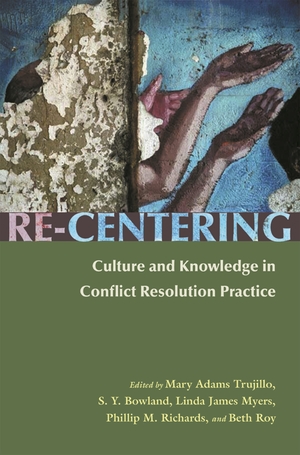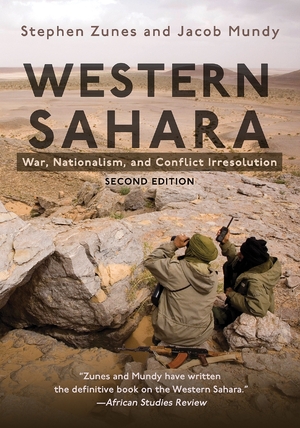"This well-rounded approach to researching mediation in the Arab world introduces valuable nuances to the current body of literature."—Jenifer Vaughan, LSE MIddle East Centre
"A volume of major importance, both in its academic significance and contribution to the field of mediation and conflict resolution studies, and in its direct policy relevance for the resolution and management of conflicts in the Arab world."—Gerd Nonneman, School of Foreign Service, Georgetown University
"This rich, fascinating collection systematically explores the causes of the dismal record of conflict mediation in the MENA region, with a wide range of theoretically informed and empirically rich case studies drawn from across the region."—Marc Lynch, Professor of Political Science at The George Washington University and Director of the Project on Middle East Political Science
"Researchers and practitioners of conflict resolution have needed this book for too long. The contributors—preeminent experts on mediation in the Middle East and North Africa—excel at trying to make sense of past mediation efforts that have struggled to improve the prospects of peace in the region."—Kyle Beardsley, Duke University
"Stimulating reading for all interested in conflict mediation in the Middle East and elsewhere."—Journal of Peace Research
"Editors Fraihat and Svensson deftly weave together a coherent story from the compiled case studies of why mediation has failed and how it can be improved."—Middle East Journal
Description
The Middle East and North Africa region has been plagued with civil wars, international interventions, and increasing militarization, making it one of the most war-affected areas in the world today. Despite numerous mediation processes and initiatives for conflict resolution, most have failed to transform conflicts from war to peace. Seeking to learn from these past efforts and apply new research, Fraihat and Svensson present the first comprehensive approach to mediation in the Arab world, taking on cases from Yemen to Sudan, from Qatar to Palestine, Syria, and beyond.
Conflict Mediation in the Arab World focuses on mediation at three different levels of analysis: between countries, between governments and armed actors inside single countries, and between different communities. In applying this holistic method, the editors identify similarities and differences in the conditions for conflict resolution and management.
Drawing upon the work of experts in the field with a deep understanding of the increasing complexities and changing dynamics of the region, this volume offers a valuable resource for academics, policy makers, and practitioners interested in conflict resolution and management in the Middle East and North Africa.
Table of Contents
Foreword: Mediation in the Arab World, I. William Zartman
Introduction, Ibrahim Fraihat and Isak Svensson
Part I: General Trajectories and Challenges of Mediation in the Arab World
1. Peace Agreements in the Middle East: A Regional Challenge to Mediation, Peter Wallensteen and Stina Högbladh
2. The Impossible Mandate for Mediation: Exclusionary Approaches to Conflict Resolution in Libya, Syria, and Yemen, Laurie Nathan
3. Current Challenges in Utilizing National Dialogue Mechanisms in Arab Local Political Context, Mohammed Abu-Nimer
Part II: Mediation in or by Arab Countries
4. UN Mediation in the Syrian Crisis: From Kofi Annan through Lakhdar Brahimi to Staffan de Mistura, I. William Zartman
5. Mediation in Syria, 2016-19: A Tale of Two Processes, Magnus Lundgren
6. Exploring United Nations Mediation Efforts in Yemen (2011–2019), Alma Abdul-Hadi-Jadallah
7. The Legitimacy Puzzle in the UN Mediation of the Libyan Conflict, Mohammed Cherkaoui
8. International Mediation in the Wake of a Failed Peace Agreement: Post-Agreement Mediation to Resolve the Civil War in Darfur, Allard Duursma
9. When Do Mediators Say ‘No’: American Resistance to Mediating the Gulf Diplomatic Crisis, Siniša Vuković and Danielle Martin
10. The Intra-Palestinian Dialogue 2007-2017: A Negotiated Disagreement? Love Calissendorff and Mimmi Söderberg Kovacs
11. Omani Mediation Diplomacy and the Concept of Concealment “Kitman,” Najla El-Mangoush
12. American Mediation in the Middle East Conflict: A House Built on Sand, Ghassan Khatib
Part III: Local Level-Mediation in the Arab World
13. Paths to Inclusion: Civil Society Involvement during the Peace Process in Algeria, Desirée Nilsson and Luís Martínez Lorenzo
14. Mediation between Sunni and Shiʿa Arabs in Iraq: Attempts, Assessment, and Adversity in Mediating in Post-2003, Massaab al-Aloosy
15. Hybrid Conflict Resolution and Justice in South West State, Somalia, Mary Hope Schwoebel
Concluding Discussion, Ibrahim Fraihat and Isak Svensson
About the Author
Ibrahim Fraihat is associate professor in international conflict resolution at the Doha Institute for Graduate Studies. He previously served as Senior Foreign Policy Fellow at the Brookings Institution and has taught international conflict resolution at Georgetown University and George Washington University. He is the author of Iran and Saudi Arabia: Taming a Chaotic Conflict.
Isak Svensson is professor at the department of Peace and Conflict Research, Uppsala University, Sweden. Svensson is the author of numerous books, including International Mediation Bias and Peacemaking: Taking Sides in Civil Wars.
Related Interest
October 2023




